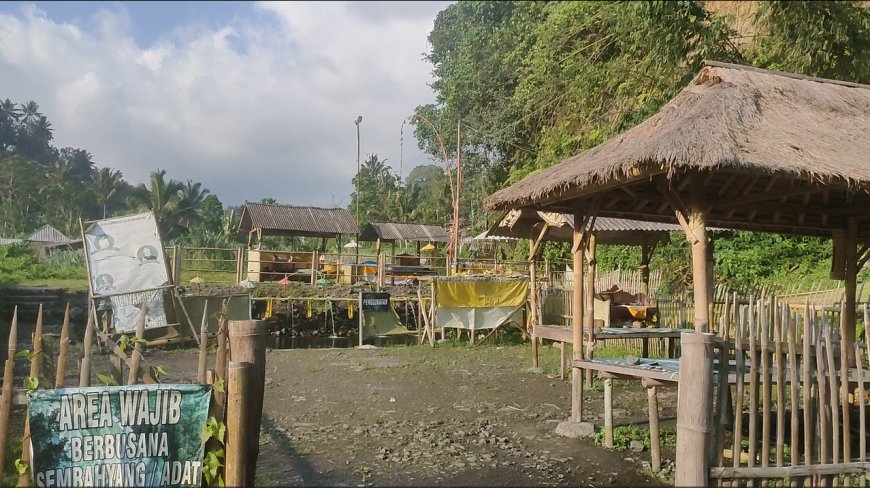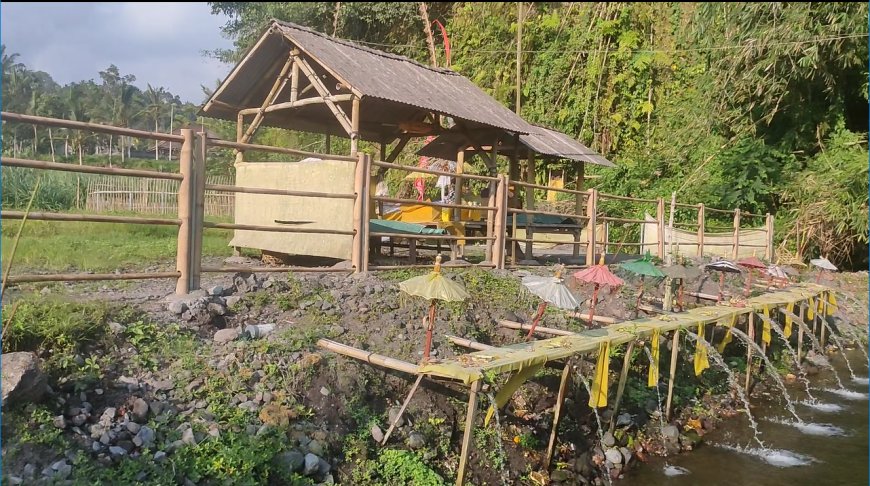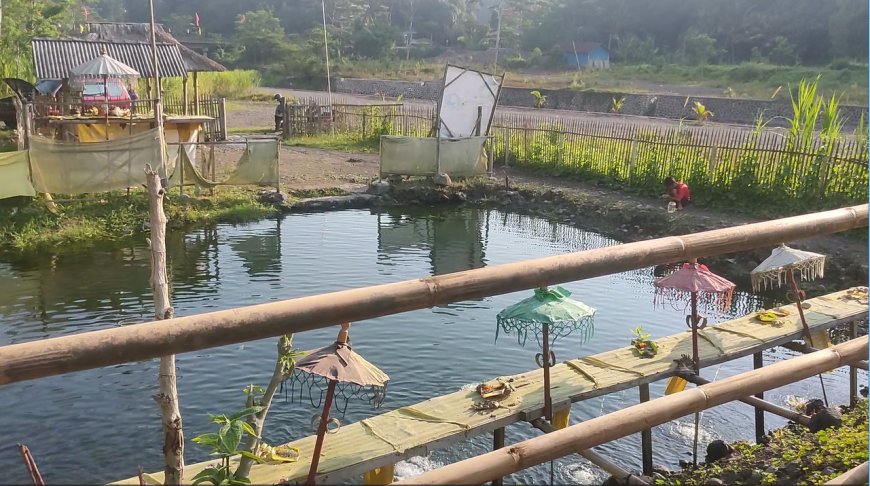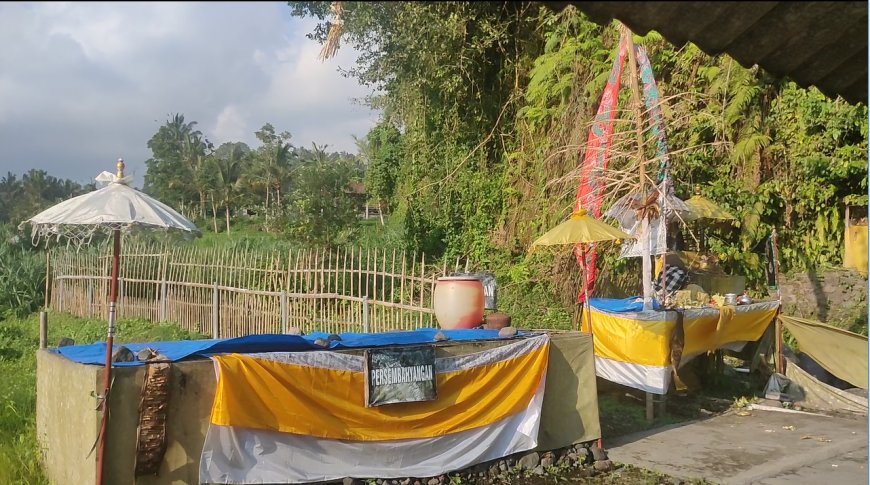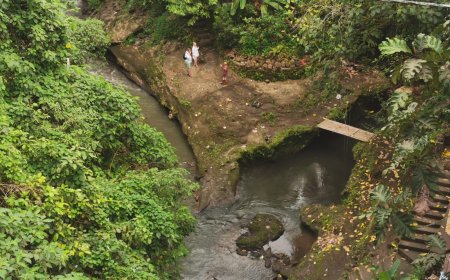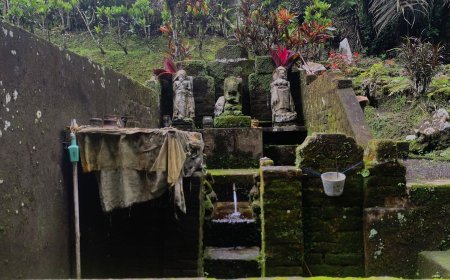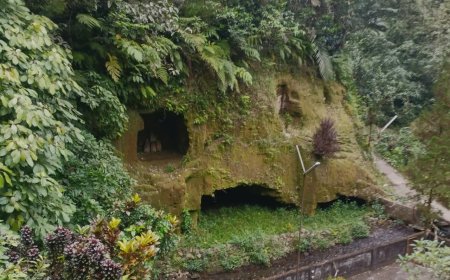Tirta Kelebut Toya Sah Telaga Dwaja Temple: A Sacred Sanctuary for Healing and Blessings
The island of Bali is renowned for its natural beauty, rich culture, and a multitude of mystical sacred sites. One such lesser-known sacred place is the Tirta Kelebut Toya Sah Telaga Dwaja Temple. This location serves not only as a place of worship but also functions as a sacred spring, particularly utilized by the Hindu community in Bali. In this article, we will explore the location, provide a brief history, and delve into the significance of the Tirta Kelebut Toya Sah Telaga Dwaja Temple as a site for seeking healing and blessings for descendants.
The island of Bali is renowned for its natural beauty, rich culture, and numerous mystical sites. One such lesser-known place is the Tirta Kelebut Toya Sah Telaga Dwaja Temple. This location is not only a place of worship but also functions as a spring, particularly utilized by the Hindu community in Bali. In this article, we will explore the location, brief history, and significance of the Tirta Kelebut Toya Sah Telaga Dwaja Temple as a place for seeking healing and blessings for descendants.
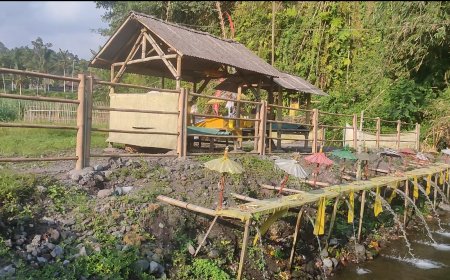
Tirta Kelebut Toya Sah Telaga Dwaja (Photo Source : Editorial Collection)
The Tirta Kelebut Toya Sah Telaga Dwaja, also known as Pura Tirta Yeh Sah, is located in Banjar Dinas Susut, Muncan Village, Selat District, Karangasem Regency. This temple is approximately 24 km from the city center of Karangasem. The journey to reach this spring takes about 51 minutes by four-wheeled vehicle and 48 minutes by two-wheeled vehicle from the city center of Karangasem. The access to the spring is easily navigated and can be assisted by using the Google Maps application.
The brief history of this spring is linked to the name of the village, Muncan, which means "gushing" in Indonesian. "Muncan" refers to water that is so abundant (gushing into this area) that the region is eroded by the immense flow, referred to as "Belong." Belong, in this context, signifies the valley chosen as a purification site by ancient holy people. Belong is also used as a place for cleaning pralingga or ritual tools found in the village.
In ancient times, the Tirta Kelebut Toya Sah Telaga Dwaja Temple served as a central large spring since 1963. During the eruption of Mount Agung in February 1963, the spring temporarily disappeared and ceased to flow. However, over time, the spring reemerged and was preserved by the local residents as a site for ritual bathing and purification. According to the Mantram Narayana scripture, it is mentioned that there are 7 rivers in heaven, and 2 of them descend to the earth as rivers: the Tukad Pakerisan, originating from Tirta Empul in Tampak Siring Village, Gianyar Regency, and the Tukad Yeh Sah, located in Pura Toya Sah Telaga Dwaja in Muncan Village, Karangasem Regency.
According to the narratives and scriptures at Pura Hulun Danu Batur, Pura Penulisan, and Pura Toya Mampeh, it is explained that the water from Pakulun Bhatara Ulun Dhanu Batur, among others, flows as Tirta Sah Telaga Dwaja and is essential for concluding ceremonies in Bali. The Lontar Arga Patra Puja mentions a prayer for the completion of ceremonies, emphasizing the significance of Tirta Sah Telaga Dwaja in the ritual process.
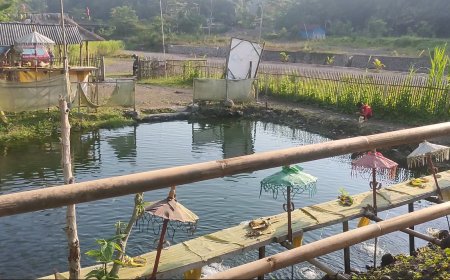
Main Pool at Tirta Kelebut Toya Sah Telaga Dwaja (Photo Source : Editorial Collection)
The Tirta Kelebut Toya Sah Telaga Dwaja Temple has one main pool with water flowing continuously from 11 springs. This pool is the primary location for ritual bathing. The temple holds profound meaning for the Balinese people, especially the residents of Muncan village, as it is believed to have the power to heal various illnesses and bestow fertility upon couples seeking children.
The water in this temple is considered to have healing properties. Individuals suffering from serious illnesses often come to the temple for purification rituals, hoping for recovery. According to one resident, who initially had diabetes, after several ritual baths, he claimed to have been cured and restored to good health. Additionally, the Tirta Kelebut Toya Sah Telaga Dwaja Temple is crucial for couples facing difficulties in having children. They visit the temple to seek blessings for fertility, engaging in rituals with the hope of conceiving.
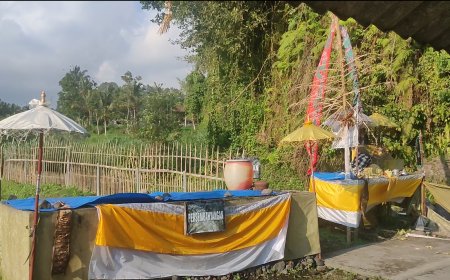
The place of worship at Tirta Kelebut Toya Sah Telaga Dwaja (Photo Source : Editorial Collection)
The temple's anniversary, known as Piodalan, is celebrated on the day of Anggara Kasih Juluwangi. However, on special holy days such as full moon, new moon, or Bayu Pinaruh, many people gather to perform rituals at the temple. Those intending to conduct rituals at the temple can bring offerings like pejati and klungah nyuh (coconut shells) or simply canang sari (offering baskets).
In conclusion, the Tirta Kelebut Toya Sah Telaga Dwaja Temple is a place of purification with profound meaning for the Balinese people. Its rich history and role in providing healing and fertility blessings make it a highly respected location. The temple is an integral part of Bali's culture and traditions that must be preserved and safeguarded.

















































